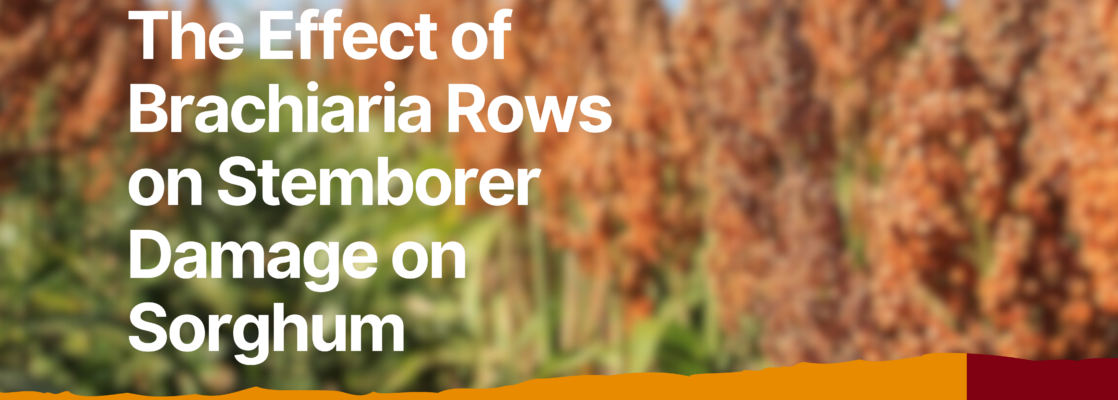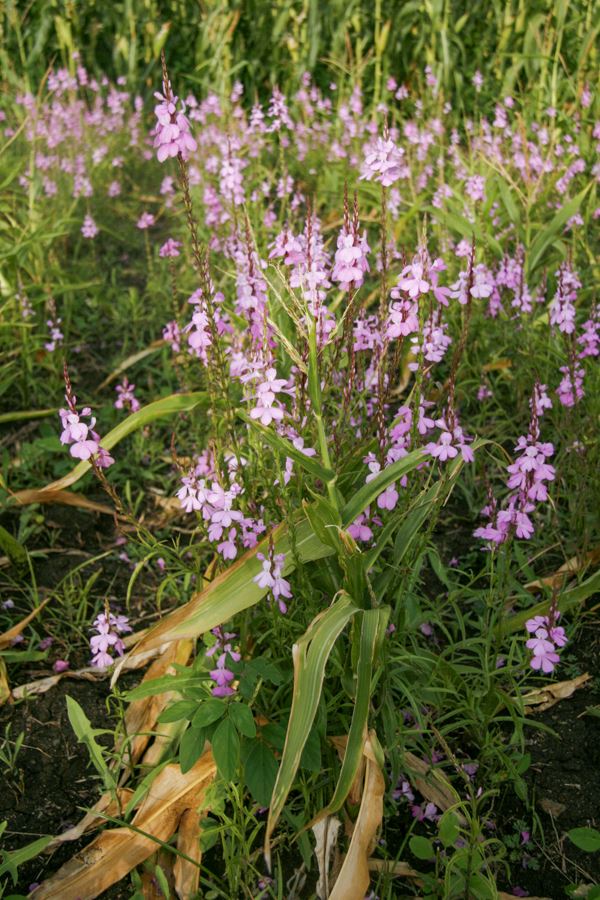Sorghum is mostly known as the world’s fifth-most important cereal crop after rice, wheat, maize, and barley. It is one of the main staple foods for many farmers in Africa, in particular the smallholder farmers. It’s a plant-based protein, high in fiber and antioxidant-rich and can help achieve recommended dietary requirements.
Nevertheless, some pests such as the lepidopteran stemborer – Chilo partellus and the parasitic weed – Striga downturn the yields of sorghum. Except for Chilo partellus, the other stemborer pests in Ethiopia are indigenous to Africa. They are assumed to have coevolved with some native grasses and sedges in the natural habitat. This blog is based on a study taken in Eastern Amhara, Ethiopia, on the effects of intercropping sorghum with Brachiaria rows as a method that seeks to minimize stemborer damage and boost yields using push-pull technology (PPT).
Desmodium and its benefits
Desmodium can be classified as a pea family, defined by its ability to contribute to nitrogen fixation in the soil with the subsequent enhancement of soil fertility (learn more here). It has been found that when intercropped with cereals such as sorghum or maize, Desmodium releases chemicals that cause stemborers to move away (the so-called ‘push’ effect). Brachiaria on the other hand, attracts the stemborers (the ‘pull’ effect).
Desmodium offers multiple advantages such as:
Stemborer Control: From pushing off stemborers, Desmodium contributes to the reduction of pest-related damage.
Striga Suppression: Brachairia stimulates germination of Desmodium seeds and, in turn, Desmodium releases compounds that induce lower germination of Striga seeds hence reducing the level of Striga infection in the field.
Soil Fertility: Desmodium is classified under the legume family, and thus plays a role in fixing nitrogen in the soil, in as much as it improves the soil fertility.
Animal Fodder: It serves as high-quality fodder for the livestock; it is therefore a plus for the farmers.
Scientific evidence
The study “The effect of Brachiaria rows on stem borer damage on sorghum in Eastern Amhara, Ethiopia” determined the impact of varying numbers of Brachiaria rows around the sorghum plots that were intercropped with Desmodium. Conducted on 61 farmers’ fields over two years, the treatments included:
- One row of Brachiaria + Desmodium
- Brachiaria + Desmodium, or two rows in between each other.
- Three rows of Brachiaria + Desmodium.
In the push-pull plots (with Brachiaria and Desmodium), less stemborer damage was noticed, compared to the mono-sorghum plots. It was also noticed that the least damage was on the plots with three Brachiaria rows.
There were comparatively fewer Striga plants in push-pull plots. An example encouraging Desmodium incorporation was that it facilitated a decrease in Striga infestation.
Push-pull plots produced higher yields as compared to the sorghum plots. In the case of the yield increase, the highest figure was obtained from the three-row Brachiaria plot, the second being the two-row plot.
Besides, the yield of sorghum in the push-pull plots was higher with reasonable biomass yields of Brachiaria and Desmodium, which the farmer uses as livestock fodder.
As we can conclude, PPT is particularly helpful for smallholder farmers in Africa since it tackles some of the essential problems of farming while increasing the yields for overall productivity. This technology urges farmers and agriculturists to embrace PPT with a view of boosting up productivity of crops as well as their sustainability. With the incorporation of Desmodium and Brachiaria in farming, they are in a position to control pests, the fertility of the soil and the outcome of their farm.
More information about this study and how to incorporate push-pull technology can be found on the pages Publication (here), Push-pull in practice (here) and How to push-pull (here).
References:
- Asmare, D., Muluken, G., Seid, H. et al. The effect of Brachiaria rows on stem borer damage on sorghum in Eastern Amhara, Ethiopia. Int J Trop Insect Sci 42, 2065–2071 (2022). https://doi.org/10.1007/s42690-021-00637-x
- Noémie M. C. Hévin, Gael J. Kergoat, Alberto Zilli, Claire Capdevielle-Dulac, Boaz K. Musyoka, Michel Sezonlin, Desmond Conlong, Johnnie Van Den Berg, Rose Ndemah, Philippe Le Gall, Domingos Cugala, Casper Nyamukondiwa, Beatrice Pallangyo, Mohamedi Njaku, Muluken Goftishu, Yoseph Assefa, Onésime Mubenga Kandonda, Grégoire Bani, Richard Molo, Gilson Chipabika, George Ong’amo, Anne-Laure Clamens, Jérôme Barbut, Bruno Le Ru, Revisiting the taxonomy and molecular systematics of Sesamia stemborers (Lepidoptera: Noctuidae: Apameini: Sesamiina): updated classification and comparative evaluation of species delimitation methods, Arthropod Systematics & Phylogeny, 10.3897/asp.82.e113140, 82, (447-501), (2024).


